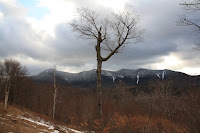 |
| This was my wake up call to letting as many people know about Lyme disease as I can reach! |
I was surprised to see how little is done to educate for a growing problem, especially in the Northeast Region of the United States where Lyme is so prevalent. If known what to look for early, it is nearly always curable.
Tick-borne Lyme disease used to show up in a little fringe of the coastal northeast United States. A bad disease, but in small terrain. Small numbers. Well, look again. Lyme disease is spreading far and wide.
Across Pennsylvania, into Ohio, southwest Michigan, northern Illinois. Heavy in Wisconsin, in Minnesota, showing up in North Dakota, even California. Look south and it’s big in New Jersey, Maryland, northern Virginia. And creeping beyond. It’s a story of ticks and deer and foxes and coyotes and birds. And pain.
The source of many bites is the deer tick, which often resides on animals in forests, the doctors said. The experts recommend that when going into the woods, individuals should travel in the middle of the day and be careful to stay on paths and avoid animal trails.
Larval and nymphal deer ticks often hide in shady, moist ground litter, but adults can often be found above the ground clinging to tall grass, brush, and shrubs. They also inhabit lawns and gardens, especially at the edges of woodlands and around old stone walls where deer and white-footed mice, the ticks' preferred hosts, thrive. Within the endemic range of B. burgdorferi (the spirochete that infects the deer tick and causes LD), no natural, vegetated area can be considered completely free of infected ticks.
Deer ticks cannot jump or fly, and do not drop from above onto a passing animal. Potential hosts (which include all wild birds and mammals, domestic animals, and humans) acquire ticks only by direct contact with them. Once a tick latches onto human skin it generally climbs upward until it reaches a protected or creased area, often the back of the knee, groin, navel, armpit, ears, or nape of the neck. It then begins the process of inserting its mouthparts into the skin until it reaches the blood supply.
In tick-infested areas, the best precaution against LD is to avoid contact with soil, leaf litter and vegetation as much as possible. However, if you garden, hike, camp, hunt, work outdoors or otherwise spend time in woods, brush or overgrown fields, you should use a combination of precautions to dramatically reduce your chances of getting Lyme disease.
Precautions:
When returning from the outdoors, people should check their bodies for clinging insects. Since some ticks that aren’t engorged are very small, use a mirror to check for insects or seek assistance from someone. Any clothes that were worn should be placed in the dryer for at least five minutes on high heat to kill any deer ticks that may have found their way onto the fabric.
Of the repellents that can keep ticks away, DEET
Property owners also should keep their land drained and dry if possible. The number of rodents should be controlled and deer presence should be limited with fences and deer-resistant plantings.
Lyme disease has many more symptoms than listed below but this is a summary of the major symptoms:
Overall:
> After experiencing the bite or a flu-like episode, you started having one health problem after another or have not felt completely well since.
> You appear deceptively well, even when in intense pain and feeling terribly unwell.
> Your symptoms wax and wane, change, come and go.
> Some symptoms stay, some come and go, some are dramatic and others merely annoying.
> You find yourself describing your symptoms as weird or bizarre.
> All these symptoms started after a certain month, season or incident.
> You have persistent malaise, with periods of worsening symptoms, often cyclical, repeating about every four weeks.
> Whenever you are stressed your pain rises to a higher level.
> Whenever you fall, injure, or cut yourself - the injury and its associated pain lingers an exaggerated amount of time.
> Alcohol reacts on you.
> Your head is unclear, can't remember, thinking is off...
> Your medical tests have all turned up negative.
> Your MD insinuates your symptoms are not real.
> You know that something about your health is definitely not right .
Body Temperature Disturbances
> Body temperature feels unregulated
> Can’t stand hot or cold temperatures.
> Body temperature below 37oC ( 98.6°F)
> Ice cold body parts and patches anywhere on body that do not match environment.
> Unexplained sudden over-heating throughout body.
> Unexplained chills (difficulty getting warmed up)
> When sleeping: Night sweats (drenching) or intense body heat.
> Unexplained sweats/fevers/feeling very hot, day and night.
> Unexplained fevers (high or low grade) Recurrent episodes of fever
Cognitive Disturbances
> Brain fog; Like a cloud reducing your clarity of mind.
>Brain block when trying to focus. Mimics Brain injury
> Difficulty in thinking and processing information.
> Difficulty reading, especially for enjoyment.
> Difficulty in planning and organizing
> Difficulty in problem solving/decision-making
> Difficulty to see or take in the whole picture.
> Difficulty with multi-tasking.
> Difficulty to think quickly and to respond quickly.
> Difficulty with judgment; Saying something without processing it correctly. Inability to think it through and its consequences.
> Difficulty making decisions.
> Difficulty estimating/figuring time.
> Difficulty in tracking objects in motion.
> Difficulty with calculations. (Inability to hold numbers in head or to add/subtract on the spur of the moment.)
> Difficulty getting started or completing a project.
> Slow processing of information
> Difficulty in performing sequential tasks.
> Difficulty learning new tasks
> Suddenly forgetting how to perform routine tasks and remembering how, much later.
> Problems with letter or number reversals (Mimics Dyslexia)
> Intermittent spelling and writing difficulty.
> Difficulty maintaining focus or concentrating.
> Easily distracted.
> Racing thoughts. Impulsive. Mimics schizophrenia
> Losses in fields of attention/executive functions such as inability to maintain divided or sustained attention and memory
> Inattention: distractibility, easily sidetracked, trouble staying focused, trouble sitting still.
> Talking a lot, in constant motion, hyperactive. Mimics ADD/ADHD- Attention-Deficit Hyperactivity Disorder
> Impulsivity: impatient, interrupts others, saying something without thinking first.
> Interrupting others in mid conversation or contributing to the conversation long after it is finished. Misspeaking.
> Difficulty to keep up to a conversation or to understand what is being said. Auditory processing problems. Disrupted participation in conversation.
> Difficulty in expressing ones self. Difficulty in word finding. Speech comes out as stammering, slurred, slow, hesitating. Word search, name block. Speech errors, wrong word comes out. Halting speech.
> Emotional and expressive incontinence.
> Slow processing, recalling, or remembering of information or what was read.
> Difficulty with basics, social, and day to day functioning.
> Declining performance in school or work.
> Feeling a significant decline in intellectual acuity.
> Feeling a loss of competence.
> Intermittent distorted memory. Short/long term memory lapses. Forgetfulness, poor or loss of short term memory. Impaired memory functions (lost items, missed appointments, retold stories) Dementias
> Tendency to get geographically disorientated; suddenly forgetting where a familiar destination is. Getting lost. Going to the wrong place. Mimics Alzheimer Disease.
> Progressive decline in cognitive abilities over the years. Drop in measurable IQ Infection
Dental Disturbances
> Difficulty chewing, pain in teeth,
> Dental problems; chronic gingivitis, receding gums, thinning enamel.
> Sudden pain within each tooth
> Painful gums
> Painful/stiff jaw, mimics TMJ
Digestive System Disturbances
(Borreliosis-caused Gut Palsy) Nerves sending incorrect messages to digestive system. Gastrointestinal tract paralysis and related abnormalities can occur anywhere along the entire length of the tract.
>Paralysis or partial paralysis of the tongue, gag reflex, esophagus, stomach, and nearby organs, small and/or large intestines.
> Change in smell/taste.
> Difficulty chewing, swallowing, or speaking.
> Disturbances of tongue, gag reflex, numbness.
> Frequent heartburn
> Gastroesophageal reflux or Rumination Disorder (which often leads to feeling starved and then over-eating)
> Eating disorders; under or over-eating.
> Not knowing when you are hungry or full.
> Unexplained weight gain or weight loss.
> Stomach pain
> Upset stomach
> Nausea, vomiting.
> Belly pain, abdominal cramps, intestinal spasms
> Bloated belly.
> Unusual constipation: putty like/unresponsive to laxatives.
>(Stops for many days and suddenly restarts for no particular reason) Intestinal pseudo-obstruction.
> Unexplained diarrhea with sometimes blood in runny stools. Mimics Irritable Bowel Syndrome.
> Colitis (inflammation of intestine) Mimics Crohn’s disease
> Reluctance to go to school/work /going out to eat because of bouts of diarrhea.
> During night, rectal muscle/bowel cramping giving an urge to defecate. Proctalgia fugax
> Fecal soiling in children after being trained.
> Mild Liver function abnormalities; liver infection, inflammation, enlargement, elevated enzymes, (spirochaeta hepatitis)
> Enlarged spleen,
> Gallbladder and bile duct disturbances
> Disturbances of any part of the intestines.
> Intestinal Microbial Flora imbalance
> Heightened response to alcohol, sweets or caffeine
Ears and Hearing Disturbances
Eight nerve
> High pitched whining, buzzing, clicking, ringing, buzzing, hissing, humming, ticking, whistling, roaring, beeping or a "whooshing" sound, as of wind or waves, or other sound in one or both ears.Tinnitius
> Pain in ear(s) with no medical cause.
> Sound sensitivity (Some noises causes extreme irritability)
> Decreased hearing in one or both ears. Hearing loss. Plugged ears.
> Ears popping
Treatment:
Early treatment of LD (within the first few weeks after initial infection) is straightforward and almost always results in a full cure. Treatment begun after the first three weeks will also likely provide a cure, but the cure rate decreases the longer treatment is delayed.
Doxycycline, amoxicillin and ceftin are the three oral antibiotics most highly recommended for treatment of all but a few symptoms of LD. A recent study of Lyme arthritis in the New England Journal of Medicine indicates that a four-week course of oral doxycycline is just as effective in treating late LD, and much less expensive, than a similar course of intravenous Ceftriaxone (Rocephin) unless neurological or severe cardiac abnormalities are present. If these symptoms are present, the study recommends immediate intravenous (IV) treatment.
Treatment of late-Lyme patients can be more complicated. Usually LD in its later stages can be treated effectively, but individual variation in the rate of disease progression and response to treatment may, in some cases, render standard antibiotic treatment regimens ineffective. In a small percentage of late-Lyme patients, the disease may persist for many months or even years. These patients will experience slow improvement and resolution of their persisting symptoms following oral or IV treatment that eliminated the infection.
Although treatment approaches for patients with late-stage LD have become a matter of considerable debate, many physicians and the Infectious Disease Society of America recognize that, in some cases, several courses of either oral or IV (depending on the symptoms presented) antibiotic treatment may be indicated. However, long-term IV treatment courses (longer than the recommended 4-6 weeks) are not usually advised due to adverse side effects. While there is some speculation that long-term courses may be more effective than the recommended 4-6 weeks, there is currently no scientific evidence to support this assertion. Click here for an article from the New England Journal of Medicine which presents clinical recommendations in the treatment and prevention of early Lyme disease.
For more details on Lyme disease Visit the CDC Website



















































